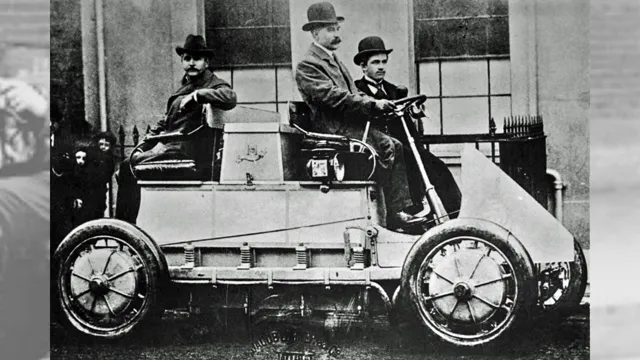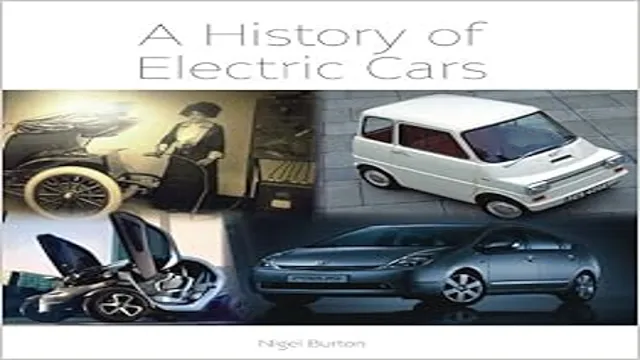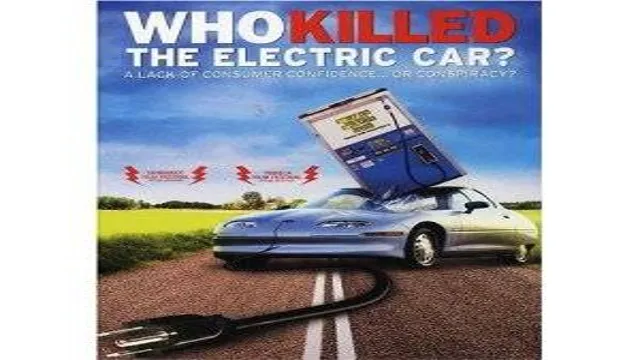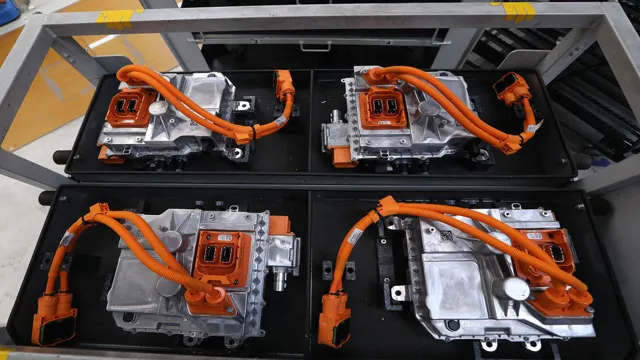The Electric Revolution: Tracing the Fascinating History of the First Electric Car!
Electric vehicles have grown increasingly popular in recent years, but did you know that the first electric car was invented over a century ago? In fact, electric cars were the norm in the beginning of the automobiles era, before being overtaken by gasoline-powered vehicles. The first electric car was invented in the 19th century by Scottish inventor Robert Anderson, who powered it with non-rechargeable batteries. However, it wasn’t until the late 1800s when electric cars started appearing on the streets of major cities, such as New York and London.
These early electric cars were quite different from the ones we know today in terms of design, performance, and convenience. They were slower, less powerful, and had limited range, making them impractical for long-distance travel. However, they were much quieter and easier to handle than gasoline cars, which made them popular among women and urban drivers.
In fact, electric taxis were widely used in cities like New York and Paris at the turn of the century. Despite their early success, electric cars soon began to lose their dominance to gasoline-powered cars as the auto industry grew and the demand for faster and longer-range vehicles increased. Nevertheless, electric cars remained in use for specialized purposes, such as mail delivery, golf carts, and low-speed neighborhood vehicles.
It wasn’t until the 21st century that electric cars began to make a comeback, fueled by advances in battery technology, government incentives, and public awareness of the environmental benefits of electric transportation. Today, electric cars are becoming more and more common on the roads as automakers invest heavily in developing new and improved electric vehicles that are faster, more powerful, and have longer range. From the Tesla Model S to the Nissan Leaf, there are now a wide variety of electric cars available to consumers at various price points.
With the increasing popularity of electric vehicles and the transition towards a cleaner and more sustainable future, it’s worth remembering the long history of the electric car and the role it played in shaping the automobile industry.
Early Roots of Electric Cars
The history of the first electric car is a fascinating one that dates back to the early days of the automobile. While gasoline-powered cars quickly became the norm, electric cars played an important role in the development of the industry. In fact, the first electric car was built in the late 1800s and was powered by batteries.
Although they were expensive and had limited range, electric cars were seen as a viable alternative to gas-powered vehicles. Over the years, technological advancements in battery technology and electric motors have greatly improved the performance of electric cars, making them a more practical and attractive option for consumers. Today, electric cars are becoming increasingly popular as people look for ways to reduce emissions and cut down on their carbon footprint.
With the rapid growth of the electric car industry, it’s clear that these vehicles are here to stay.
1832: The First Electric Carriage
The roots of electric cars can be traced back to 1832 when the first electric carriage was created. Robert Anderson, a Scottish inventor, built the first carriage that was powered by non-rechargeable electric cells. The carriage was capable of traveling up to four miles per hour and could carry two passengers.
Although it was a breakthrough, the carriage was costly to operate since the cells needed frequent replacement. It was not until the late 19th century that electric cars gained popularity. As cars became cheaper and more efficient, gasoline-powered cars became the norm.
However, the 21st century saw a surge in the creation and adoption of modern electric cars, especially with the increase in environmental awareness and the need for sustainable transportation. Today, electric cars are no longer a novelty, but a practical and efficient mode of transportation.
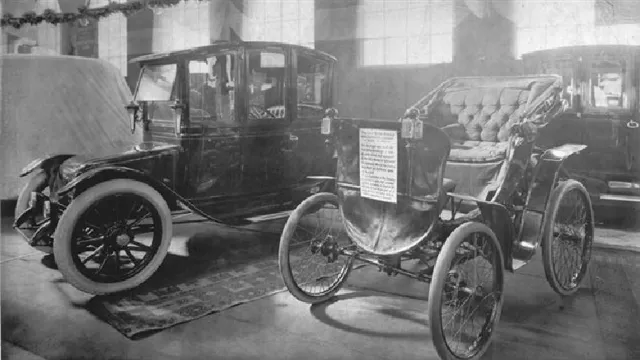
1859: The First Rechargeable Battery
The early roots of electric cars can be traced back to the invention of the first reliable rechargeable battery in 185 French physicist Gaston Planté is credited with creating the first lead-acid battery, which would later become the standard in many early electric cars. These early electric cars relied on batteries as their power source, and while they were more expensive than their gas counterparts, they were also much cleaner and quieter.
However, the limited range of these early electric cars was a significant obstacle, as their batteries could only last for a few miles before needing to be recharged. Despite this limitation, the early roots of electric cars laid the groundwork for the development of more advanced electric vehicles that would emerge over a century later.
Milestones in Electric Car Development
The history of the first electric car goes back to the 1830s when Robert Anderson, a Scottish inventor, built the first crude electric carriage. However, it was not until the 1880s that electric cars gained popularity when Thomas Parker, a British inventor, created the first production model electric car. The early electric cars, commonly known as “horseless carriages,” had limited range and were mainly used as city cars.
Nevertheless, in 1900, electric cars accounted for around one-third of all cars on the road, and companies like Columbia and Waverley Electric began producing electric cars on a large scale. However, the emergence of gasoline-powered vehicles, low oil prices, and advancements in the internal combustion engine technology gradually displaced electric cars, and they became a niche product. It was not until the 21st century that electric cars made a comeback as technological advancements increased battery range, performance, and charging times.
Today, electric cars are becoming more common as battery technology continues to improve, and automakers are investing more in electrification technology.
1873: First Electric Engine Patent
The development of electric cars has come a long way since the first electric engine patent in 187 This milestone paved the way for technological advancements in the realm of electric vehicles. However, it wasn’t until the 2000s when electric cars started making a comeback, with models such as the Tesla Roadster and Nissan Leaf gaining popularity.
In today’s environmentally-conscious world, electric cars are becoming more and more prevalent as people seek eco-friendly alternatives to gasoline-powered vehicles. The key advantage of electric cars is that they run on electricity instead of fossil fuels, which reduces their emissions significantly. As a result, they are seen as the future of transportation.
From the early beginnings of electric cars to the present day, the potential for electric vehicles has continued to grow and the innovations made in the past have paved the way for the current electric cars we see on the road.
1899: The First Electric Taxi in New York City
The year was 1899, and the first electric taxi made its debut on the streets of New York City. It was a milestone in the development of electric cars, marking the beginning of a new era in transportation. The taxi was powered by a rechargeable battery, rather than a combustion engine, making it a cleaner and more efficient mode of transportation.
Over the years, electric cars have come a long way, with major advancements in battery technology and charging infrastructure. Today, electric cars have become a popular choice for drivers who want to reduce their carbon footprint and save money on gasoline. With the rise of electric car manufacturers and the growing availability of charging stations, it’s clear that electric cars are the future of transportation.
Are you ready to join the electric revolution?
1900: First Electric Car Speed Record
Electric Car Speed Record Electric cars have come a long way since their creation in the late 1800s, and in 1900, a milestone was achieved when an electric car set the first ever electric car speed record. This remarkable feat was accomplished by a French vehicle called La Jamais Contente, designed and built by Camille Jenatzy. La Jamais Contente, which means “The Never Satisfied,” broke the 62 mph speed barrier, reaching a top speed of 6
79 mph. This accomplishment paved the way for electric cars and marked a significant milestone in the development of electric vehicles. Although it took over a century for electric cars to become mainstream, this achievement shows that electric cars have been around for over a century, and the constant development and innovation of electric vehicles can lead to exciting advancements in the near future.
The Rise and Fall of the Electric Car
The history of the first electric car is a fascinating one, marked by both triumph and tragedy. The electric car made its debut in the late 1800s, but it wasn’t until the early 1900s that it started to gain popularity. At one point, electric cars accounted for nearly one third of all vehicles on the road.
However, their popularity was short-lived. The invention of the gasoline-powered car in the early 1900s, followed by the discovery of oil in Texas in 1901, proved to be a death knell for the electric car. Gasoline was cheap, plentiful and convenient, and automakers abandoned the electric car in favor of internal combustion engines.
It wasn’t until the 1990s that electric cars started to make a comeback, and even then, progress was slow. But now, thanks to advances in technology, electric cars are becoming increasingly popular once again. They are more efficient, have longer ranges and are easier to recharge than ever before.
It’s a testament to the ongoing evolution of the automobile industry, and a shining example of the power of human ingenuity.
1910-1920s: The Golden Age of Electric Cars
During the early 1900s, electric cars enjoyed a “golden age.” By 1912, there were more electric cars than gasoline-powered vehicles on American roads, and more than 30,000 electric cars rolled out from various factories. The electric car industry boomed thanks to innovations like improved battery technology, more robust electric charging stations, and the adoption of affordable mass-production techniques.
However, electric cars’ output was eventually overshadowed by cheaper, more convenient and more widely available gasoline-powered cars. With oil production costs dropping and gas stations popping up everywhere, gasoline cars quickly gained the upper hand. Additionally, electric cars couldn’t go very far due to battery limitations and lack of infrastructure.
Eventually, the rise and fall of the electric car industry serve as an illustration of the interplay between technological advancements, consumer preferences, and available resources.
1930s-1960s: Decline in Popularity
The 1930s marked the beginning of a decline in popularity for electric cars, which continued until the 1960s. The rise of gasoline-powered cars, coupled with the availability of cheap oil, meant that electric cars were no longer seen as a viable option for mainstream use. Many automobile manufacturers, including General Motors, discontinued their electric car lines during this time.
However, there were still some electric vehicles being used in niche markets, such as for delivery trucks or in golf courses. Despite the decline in popularity, the electric car remained an intriguing concept, with some designers continuing to create new and innovative prototypes. It wasn’t until the 1990s that the electric car began to make a comeback as concerns over the environment and reliance on foreign oil became more pressing issues.
1970s-1980s: Resurgence of Electric Cars
During the 1970s and 1980s, there was a resurgence of electric cars as people became more environmentally conscious. Manufacturers such as General Motors, Ford, and Chrysler all started producing electric cars, with the most popular being the GM EV However, the popularity of these electric cars was short-lived as they faced several challenges, including limited range and high costs of production.
The oil crisis of the 1970s led to the development of electric cars, but as the price of oil decreased, interest in these vehicles dwindled. Additionally, the lack of charging infrastructure made it difficult for people to use these electric cars for long trips. By the 1990s, the production of electric cars had almost completely stopped as manufacturers shifted their focus to more profitable gasoline-powered vehicles.
However, the innovation and development that took place during this era paved the way for the current electric car renaissance that we are experiencing today, where electric cars are more affordable, have longer ranges, and have a growing charging infrastructure.
Revival and Advancements of Electric Cars
The history of the first electric car dates back to the late 19th century when Thomas Davenport built a small electric car powered by a primitive battery. However, it was in 1891, when William Morrison built the first practical electric car with an advanced battery. This car had a top speed of 13 mph and could travel up to 25 miles on a single charge.
During the same period, electric cars were becoming popular among the wealthy due to their silent operation and ease of use. However, advancements in petrol-powered cars soon eclipsed electric cars, leading to a decline in their demand. It was only in recent years that electric cars made a comeback, with major car manufacturers investing heavily in electric car technology.
Thanks to technological advancements, modern electric cars are capable of traveling hundreds of miles on a single charge and can be charged using various methods like traditional charging and fast charging. Electric cars have come a long way since their inception, and their eco-friendliness and low maintenance costs have made them an attractive option for car buyers.
1996: General Motors’ EV1
The electric car industry has come a long way since General Motors’ first attempt with the EV1 in 199 With advancements in technology and a growing concern for the environment, the popularity of electric cars has surged in recent years. Now, major car manufacturers such as Tesla, BMW, and Nissan have electric car models on the market, each with their unique features and benefits.
Electric cars offer a clean and sustainable alternative to traditional gas-powered vehicles, with zero emissions and a significantly reduced carbon footprint. Although electric cars have higher upfront costs, they make up for it in savings on fuel and maintenance costs in the long run. With government incentives and a growing infrastructure of charging stations, the electric car industry is set to continue its growth and become more accessible to the general public.
2008: Tesla Roadster
The 2008 Tesla Roadster was a game-changer in the automotive industry, marking the revival and advancements of electric cars. With a range of over 200 miles on a single charge, it proved that electric cars could be practical and competitive with gas-powered vehicles. The Roadster’s sleek design and high-performance capabilities earned it a spot as a luxury sports car, rather than just an eco-friendly option.
Furthermore, its Lithium-ion battery technology laid the foundation for Tesla’s later models, including the Model S sedan and Model X SUV, which remain some of the most popular electric cars on the market today. The Roadster’s success proved that electric cars could appeal to a wider audience than just environmentally-conscious drivers, and it paved the way for the electric vehicle revolution that we see today.
2021: Advancements in Battery Technology and Range
The year 2021 has brought about significant advancements in battery technology and range, further reviving and enhancing the electric car market. Electric cars have been trending for some time now and are gradually replacing the traditional fossil-fuel-based vehicles. The advancements have brought about longer-lasting and more powerful batteries, enabling electric cars to cover more distance with a single charge.
Not only that, but the charges are also taking less time, making it easier for commuters to charge their vehicles while on the go. With the increased range and power, electric cars are no longer limited to being solely convenient for short commutes around the city. They’re now suitable for long-distance travel as well.
The advancements in battery technology bring about cleaner and greener transportation, reducing carbon emissions and pollution. Hence, electric cars are gradually becoming the future of the transportation industry, providing a sustainable and eco-friendly solution for the world’s growing transportation needs.
Conclusion
In the history of the first electric car, we see the early beginnings of a technology that is still playing a vital role in the automotive industry today. From its humble origins in the late 19th century, the electric car has come a long way, evolving into sleek and sophisticated models that offer impressive performance and sustainability. While not without its challenges, the electric car has proven to be a trailblazer in the world of alternative energy and transportation.
Who knows what the future holds for the electric car, but one thing is for certain – its impact on the automotive industry will continue to be felt for generations to come. So, charge up your batteries and get ready for the ride of a lifetime!”
FAQs
When was the first electric car invented?
The first electric car was invented in the late 1800s.
Who invented the first electric car?
The first electric car was invented by Thomas Davenport, an American inventor.
How far could the first electric car travel on a single charge?
The first electric car could only travel about 50 miles on a single charge.
Was the first electric car popular?
The first electric car was not very popular due to the limited range and high cost compared to gasoline-powered cars.
